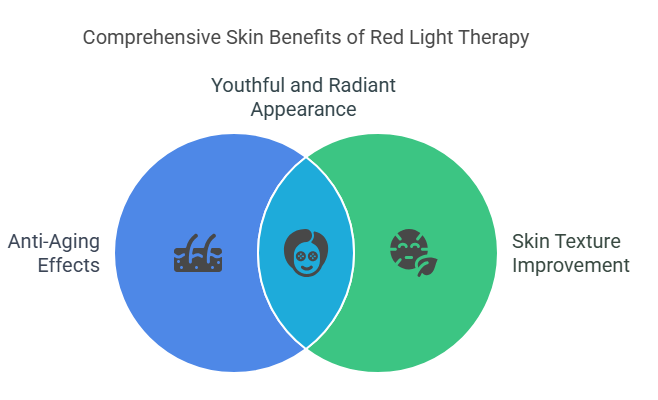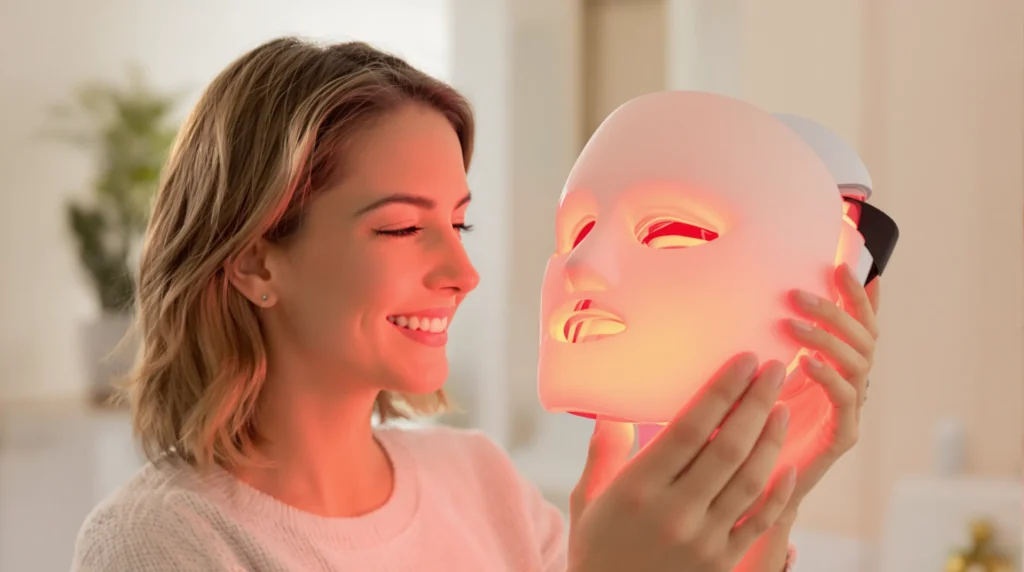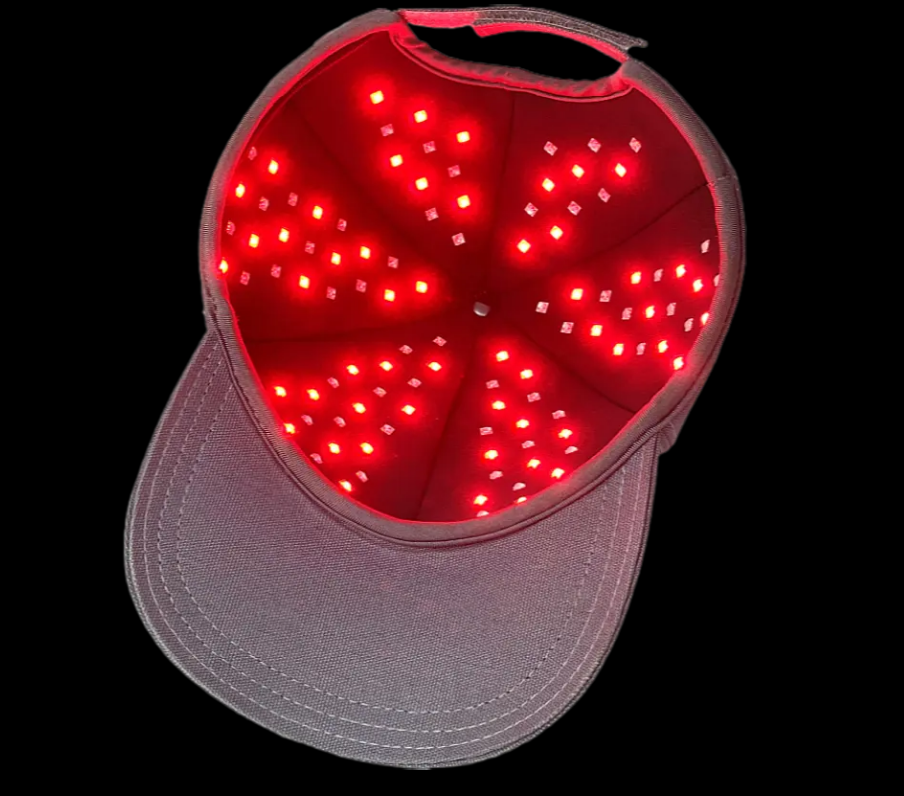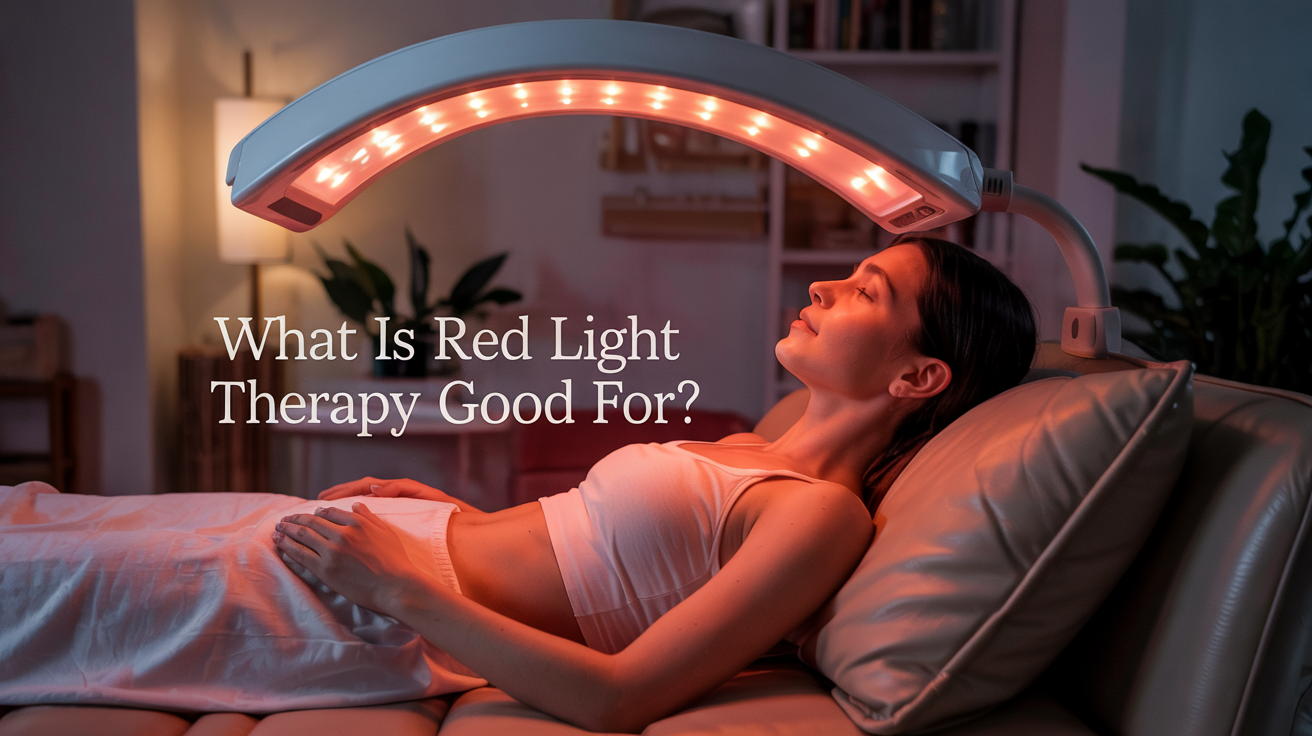In a world where wellness trends come and go faster than a viral TikTok, red light therapy (RLT) has managed to hold its ground—not just as a fleeting fad but as a scientifically-backed treatment with promising benefits. Also known as photobiomodulation (PBM) or low-level light therapy (LLLT), RLT uses specific wavelengths of red and near-infrared light to stimulate the body’s natural healing processes.
From skincare and pain relief to muscle recovery and mental well-being, red light therapy has been making waves across health, beauty, and medical communities. Whether it’s an A-list celebrity swearing by its anti-aging effects or an athlete using it for post-workout recovery, the buzz around RLT is impossible to ignore.
But what exactly makes red light therapy so beneficial? In this blog, we’ll dive deep into the science behind RLT and explore the wide range of conditions it may help with—from rejuvenating your skin to easing chronic pain. Let’s shed some light on what this therapy is truly good for.
1. What is Red Light Therapy
Red light therapy is a non-invasive treatment that harnesses the power of low-level red and near-infrared light to promote cellular function. Unlike harsh UV rays from the sun, which can damage skin cells, red light penetrates the skin safely, reaching the cells and stimulating natural biological processes.
At its core, RLT works by delivering wavelengths of light (typically between 600–1000 nanometers) that are absorbed by the mitochondria—the powerhouse of the cell. This absorption boosts adenosine triphosphate (ATP) production, essentially giving cells more energy to repair, regenerate, and function optimally. The result? Enhanced healing, reduced inflammation, and improved overall cellular health.

The beauty of red light therapy lies in its non-invasive nature. There are no needles, no downtime, and no harsh chemicals involved. It’s as simple as exposing your skin to the light, whether through a handheld device, a full-body panel, or a professional-grade therapy bed. As research continues to uncover new applications, RLT is proving to be a powerful tool for improving skin, easing pain, and even supporting brain function—without the need for pharmaceuticals or surgery.
2. The Benefits of Red Light Therapy
Red light therapy (RLT) isn’t just another overhyped wellness trend—it’s backed by growing scientific research showing its potential to support various health and beauty concerns. From rejuvenating skin to easing chronic pain, RLT taps into the body’s natural healing abilities, making it a versatile tool in the world of non-invasive treatments.
2.1 Red Light Therapy for Skin Health and Appearance
One of the most popular uses of red light therapy is for improving skin health. Unlike harsh chemical treatments or invasive procedures, RLT enhances the skin’s natural processes to promote a youthful and radiant appearance.

- Anti-Aging Effects: Red light therapy stimulates collagen production, the protein responsible for keeping skin firm and smooth. As we age, collagen levels drop, leading to wrinkles and fine lines. By boosting collagen synthesis, RLT helps maintain skin elasticity and reduce visible signs of aging.
- Skin Texture Improvement: Regular use of RLT can lead to a more even skin tone, reducing hyperpigmentation, scars, and blemishes. It works by supporting cellular repair and regeneration, which helps smooth out rough patches and restore a healthy glow.
- Acne Treatment: Unlike blue light therapy, which kills acne-causing bacteria, red light therapy targets inflammation and oil production. By calming redness and reducing excess sebum, RLT may help prevent breakouts and accelerate the healing of existing acne lesions.

2.2 Red Light Therapy for Pain Relief and Muscle Recovery
Athletes, fitness enthusiasts, and individuals dealing with chronic pain conditions are increasingly turning to red light therapy for its natural anti-inflammatory and pain-relieving properties.
- Reduces Muscle Pain and Inflammation: After intense workouts, muscles often become sore due to microscopic damage and inflammation. Red light therapy enhances circulation and reduces oxidative stress, which helps muscles recover faster. Many athletes use RLT as a post-training recovery tool to minimize downtime and improve performance.
- Chronic Pain Management: Studies suggest that red light therapy can help alleviate arthritis pain, fibromyalgia symptoms, and joint stiffness by reducing inflammation and increasing blood flow to affected areas. People with chronic pain conditions may experience relief with consistent RLT sessions.
2.3 Wound Healing and Circulation
Red light therapy has shown impressive results in wound healing and improving circulation, making it a valuable tool for those with slow-healing injuries or conditions that affect blood flow.
- Improves Blood Circulation: RLT helps dilate blood vessels and promote better oxygen and nutrient delivery to tissues, which accelerates the body’s natural healing process. Improved circulation also supports cardiovascular health.
- Promotes Wound Healing: Whether it’s a diabetic ulcer, surgical scar, or burn, red light therapy encourages tissue regeneration and reduces inflammation, leading to faster wound healing. This makes it a promising therapy for people with compromised healing abilities.
2.4 Mental Health and Cognitive Function
Emerging research suggests that red light therapy may have a role in supporting mental health and brain function, with studies exploring its effects on mood disorders and neurodegenerative conditions.
- Potential Benefits for Mental Health: Some studies indicate that red light therapy might positively influence serotonin and dopamine levels, which are crucial for mood regulation. This suggests that RLT may help reduce symptoms of depression and anxiety.
- Cognitive Improvements: The potential of red light therapy extends to brain health, with research showing promise in improving cognitive function, memory, and focus. Some clinical trials have explored its effectiveness for conditions like dementia, Alzheimer’s, and traumatic brain injuries (TBI), though further studies are needed.
2.5 Hair Growth and Other Conditions
Beyond skin and muscle benefits, red light therapy is also being explored for its potential impact on hair regrowth and neurological disorders.

- Supports Hair Growth: RLT is thought to increase blood flow to the scalp, delivering more oxygen and nutrients to hair follicles. Some research suggests that it may help with androgenetic alopecia (pattern baldness) and other hair loss conditions.
- Potential Benefits for Neurological Disorders: Though still an emerging field, some studies suggest that red light therapy may be beneficial for conditions like Parkinson’s disease, multiple sclerosis, and fibromyalgia by reducing inflammation and supporting cellular function in the nervous system.
3. How Does Red Light Therapy Work?
Red light therapy works at the cellular level, stimulating mitochondrial function to enhance the body’s natural healing and regenerative processes.
Cellular Absorption of Red and Near-Infrared Light
When exposed to specific wavelengths of red (600–700 nm) and near-infrared (700–1000 nm) light, the cells in our body absorb this energy. The mitochondria, often called the powerhouse of the cell, respond by increasing adenosine triphosphate (ATP) production, which fuels various cellular activities.
Boosting Cellular Energy and Healing
With increased ATP production, cells function more efficiently and repair themselves faster. This improved cellular energy leads to:
- Enhanced collagen production (for skin health)
- Reduced inflammation (for pain relief and muscle recovery)
- Accelerated wound healing and improved circulation
- Improved neuronal function (for brain health and cognitive benefits)
Red light therapy doesn’t rely on heat or physical stimulation—it simply harnesses light to trigger the body’s own healing mechanisms. This makes it a safe, non-invasive, and drug-free therapy with minimal side effects.
4. Safety and Side Effects
One of the reasons red light therapy (RLT) has gained popularity is its strong safety profile. Unlike many conventional treatments that rely on medications or invasive procedures, RLT is non-invasive, painless, and free from harsh chemicals. This makes it an appealing option for those looking for natural ways to support their health and well-being.
Is Red Light Therapy Safe?
For the mass majority of people, yes—red light therapy is considered very safe when used correctly. It doesn’t produce UV radiation, so there’s no risk of sunburn or DNA damage. Additionally, since it doesn’t rely on heat to create effects, it’s not likely to cause burns or discomfort.
Potential Side Effects
While side effects are rare, improper or excessive use of RLT may cause:
- Skin Irritation: Some individuals with sensitive skin may experience temporary redness or mild irritation, especially with prolonged exposure. This usually resolves quickly.
- Eye Sensitivity: Looking directly into high-intensity red light without proper eye protection could lead to discomfort or eye strain. Protective goggles are recommended for high-powered devices.
- Overuse Concerns: More isn’t always better—overusing red light therapy may lead to diminishing returns, meaning the benefits plateau and excessive exposure could cause mild discomfort. It’s best to follow manufacturer guidelines or professional recommendations.
Overall, when used correctly and in moderation, red light therapy is a low-risk, non-invasive treatment with minimal side effects.

Conclusion
Red light therapy is more than just a wellness trend—it’s a science-backed, non-invasive treatment with wide-ranging benefits. From smoother skin and reduced wrinkles to faster muscle recovery and improved mental well-being, RLT has shown promise in helping the body heal itself naturally.
Its ability to boost cellular energy (ATP), reduce inflammation, and enhance circulation makes it a versatile tool for various health concerns, including pain management, wound healing, and even cognitive support.
As research continues to expand, the potential applications of red light therapy may go beyond what we know today. Scientists are already exploring its use for neurodegenerative diseases, chronic pain conditions, and even athletic performance enhancement. With its growing scientific support and minimal risks, RLT is shaping up to be a game-changer in health and wellness.
So, whether you’re looking to rejuvenate your skin, ease pain, or simply optimize your body’s natural healing abilities, red light therapy offers an exciting, evidence-based approach—with the future looking even brighter. ✨
Frequently Asked Questions (FAQ)
How often should I use red light therapy?
The ideal frequency depends on the condition you’re treating. For skin health and anti-aging, 3–5 sessions per week for 10–20 minutes per session is common. For pain relief or muscle recovery, daily sessions may be more beneficial. Always follow the guidelines provided with your device or consult a healthcare professional.
How long does it take to see results?
Results vary based on the individual and the condition being treated. Some people notice improved skin texture and reduced pain within a few weeks, while deeper healing benefits (such as wound repair or hair growth) may take several months of consistent use.
Is red light therapy safe for all skin types?
Yes! Red light therapy is safe for all skin types and does not cause UV damage. However, individuals with light sensitivity disorders or those taking photosensitizing medications should consult a doctor before using it.
Can red light therapy help with weight loss?
While some studies suggest red light therapy may help reduce fat cells and improve metabolism, it is not a substitute for a healthy diet and exercise. It may enhance circulation and recovery, which could support an active lifestyle.
Can I use red light therapy at home, or do I need professional treatments?
Both are options! Home-use red light therapy devices are widely available and effective for skin care, muscle recovery, and general wellness. Professional treatments at dermatology clinics or wellness centers may use higher-powered devices for deeper penetration and faster results.
Are there any contraindications for red light therapy?
While generally safe, people with epilepsy, pregnancy, active cancers, or severe light sensitivity should check with a healthcare provider before starting red light therapy. Additionally, those with photosensitive conditions or taking medications like isotretinoin (Accutane) should use caution.
Can I combine red light therapy with other treatments?
Yes! RLT can complement many other treatments, including skincare routines, physical therapy, and even microneedling or laser therapies. Just make sure to follow recommended guidelines to avoid overstimulating the skin.
Does red light therapy feel warm or painful?
No, red light therapy is completely non-invasive and painless. Some people feel a gentle warmth from the light, but it does not cause discomfort or burning like some other light-based treatments.




